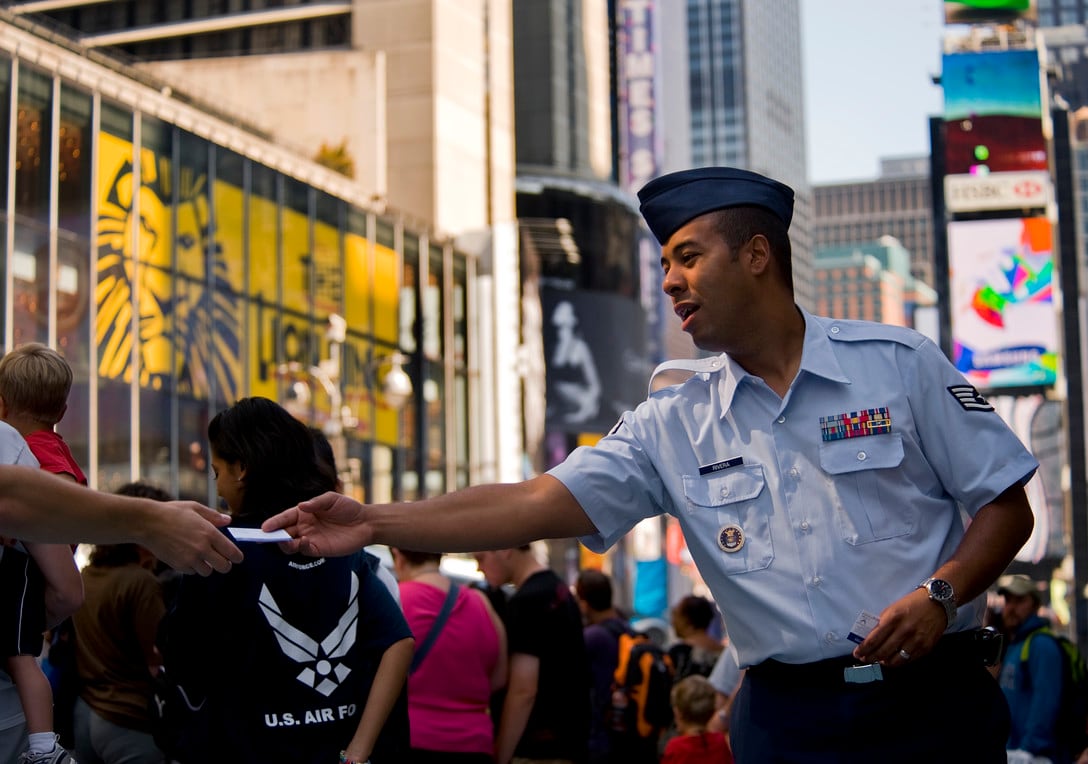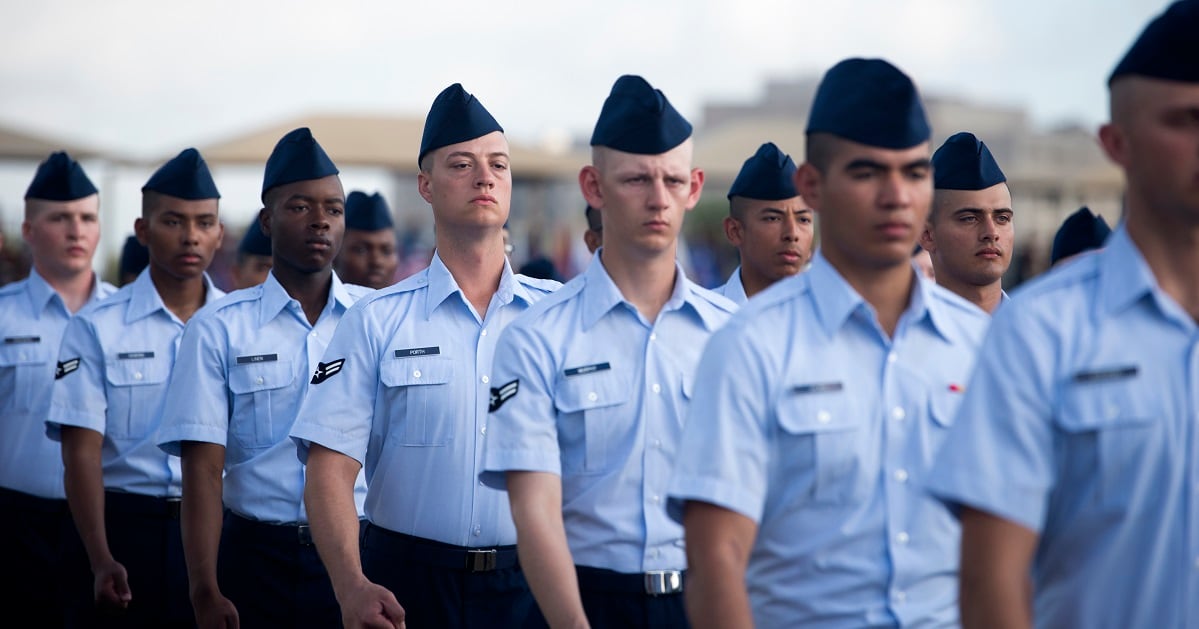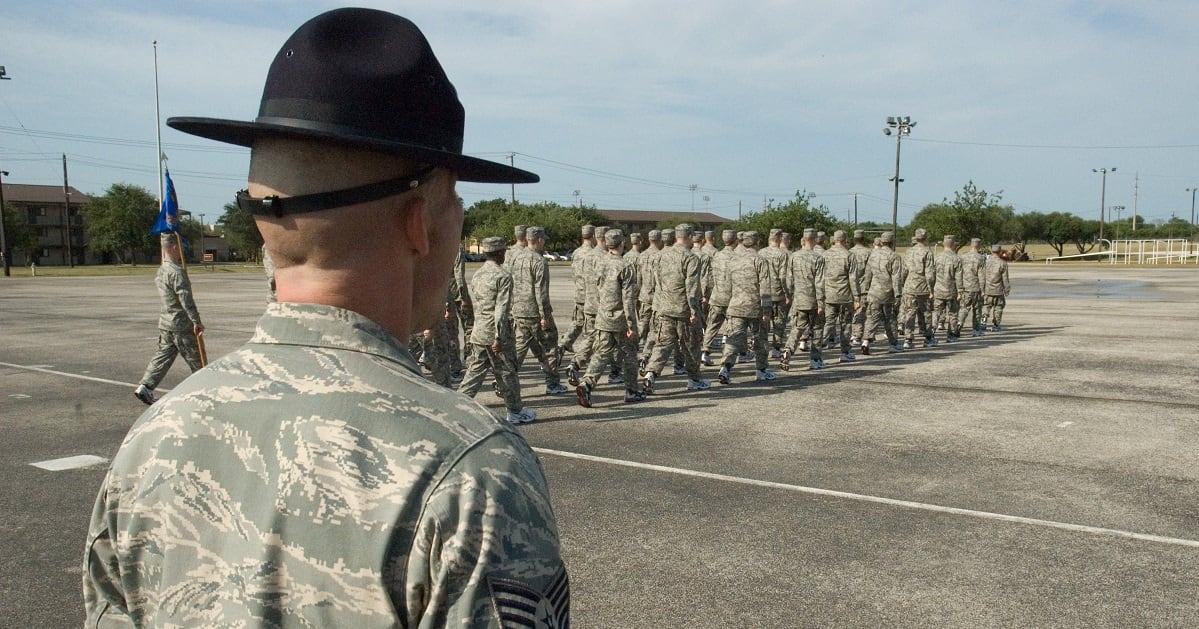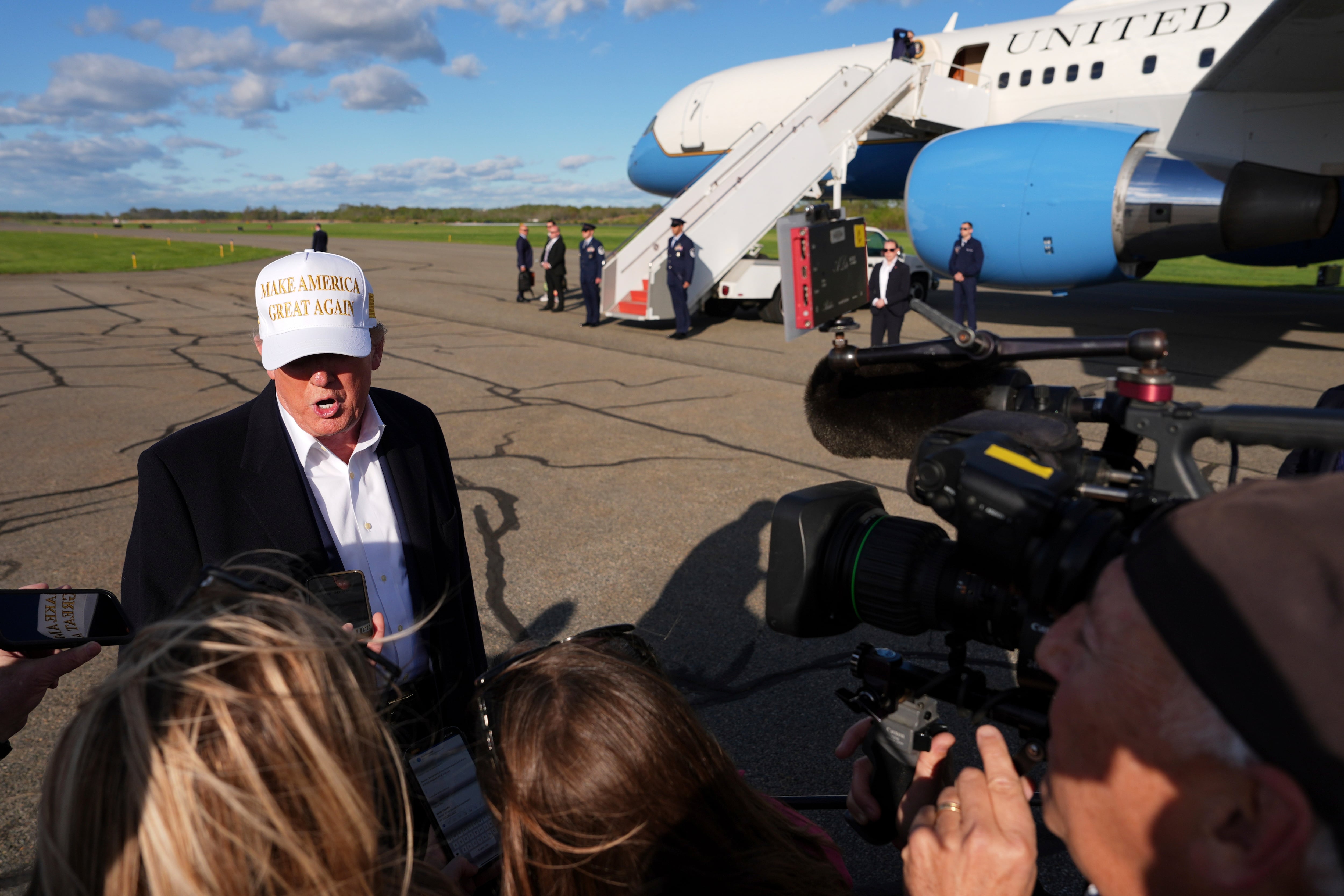The Air Force’s Basic Military Training recently expanded from 7.5 weeks to 8.5 weeks.
The BMT changes — which also include a renewed focus on Air Force history and heroes, increased physical training sessions, and possibly a full weapons qualification program — are part of the Air Force’s effort to increase the readiness and lethality of the new airmen it produces.
But Air Education and Training Command officials also hope the updates to BMT will accelerate the pace at which airmen adopt the service’s core values and principles — and think of themselves as airmen first.
“When Marines graduate, they identify themselves with being a Marine,” said Master Sgt. Robert Kaufman, a military training instructor at Joint Base San Antonio-Randolph in Texas, said. “When an airman graduates, they identify themselves with their career field, or they identify themselves with their rank. We want to make sure that when the airmen leave [BMT], they have the mindset that, ‘I’m an airman, with a capital A.’”
RELATED

The Air Force previously followed the 7.5-week BMT course with another program called Airmen’s Week, which covered classes on life skills. But now, those lessons — on matters such as character development, leadership skills, self-discipline and motivation, how to handle finances, sexual assault prevention, the honor code, and how to strike the balance between professional and personal life — will be peppered throughout the 8.5-week BMT program.

All the same content will be taught as was during Airmen’s Week. But Lt. Col. Jose Surita, commander of the 326th Training Squadron, said teaching it throughout the two-month program will allow military training instructors to go back and re-emphasize lessons several times on things like Air Force core values.
“It’s driving those points home, weaving the curriculum throughout the 8.5 weeks,” Surita said.
The Air Force is also increasing the number of physical training sessions from 31 to 44. Even with the longer BMT period, that will mean more PT — nearly every morning — as the Air Force seeks to teach trainees to think of fitness as a lifestyle and a mindset, not just something to get through.
“There are a lot of health benefits that go along with being physically fit," Kaufman said. "We want them to go to their first base ready to roll, and pass that fitness test, and make that a lifestyle.”
Chief Master Sgt. Lee Hoover, superintendent of the 737th Training Group, said that AETC looked at its entire BMT schedule and found early morning appointments that could be rescheduled for later in the day to allow more PT time. This includes a mix of cardiovascular exercise, strength training, and interval training, Kaufman said.
And as part of a renewed focus on Air Force history and its heroes, BMT will now have a “memorial run” every Saturday, dedicated to famed airmen such as recent Medal of Honor recipient Master Sgt. John Chapman. Those memorial runs will begin with a reading of heroes' citations and career highlights, and then trainees will run in their memory.
Kaufman said that when AETC has dedicated runs to legendary airmen before, it’s pushed airmen to excel.
“When you give that story of what Sgt. Chapman did before the session starts, and then you revisit it in the middle of the PT session, and then at the end, when the airmen are required to give their last bit of effort, you can hear the trainees say, ‘Let’s do this for Sgt. Chapman, Sgt. Chapman didn’t give up.’ That’s increasing their performance, because they don’t want to give up if this individual didn’t give up.”
AETC will also weave lessons on Air Force history and “Highlighted Airmen” — focusing primarily on enlisted airmen — into classroom and physical training each day. And the 326th Training Squadron developed a new MTI Heritage Handbook featuring heroes that every trainee will be given.
And AETC plans to dedicate each obstacle on its obstacle course during Basic Expeditionary Airman Skills Training, or BEAST, to an Air Force hero.
“We want to make sure airmen who come in a month from now, or a year from now, fully understand the sacrifices and the service of heroes who have gone before us,” like Chapman, Hoover said. “So when they graduate, they know what it means to be an airman. ... When they leave here, they’ll know whose footsteps they’re following.”
AETC has also moved the BEAST course from the fifth week, when it is currently held, to the very end of BMT to make it the final event before graduation.

And the current self-aid and buddy care course is being replaced with a new Tactical Combat Casualty Course. It will continue to cover the same basic first aid and life-saving skills, such as how to apply a tourniquet and properly bandage a wound, and will still take four hours. But the new course will aim to more closely simulate a battlefield environment.
AETC is also considering beefing up its current weapons familiarization course with a full weapons qualification program. But there are still a lot of details on that to be decided.
Today, basic trainees fire off a few rounds on an M-16 rifle to get familiar with the process and how it feels, but they don’t have to qualify by hitting a certain number of targets. Airmen only qualify on their weapon after they have left basic training, though when that happens varies by career field.
Hoover said AETC’s goal is to have a program where they qualify at basic training, although it hasn’t been decided if BMT’s weapons qualification course would have the same qualification requirements as the rest of the Air Force. Hoover also said AETC hopes to eventually move to the M-4 rifle.

Stephen Losey is the air warfare reporter for Defense News. He previously covered leadership and personnel issues at Air Force Times, and the Pentagon, special operations and air warfare at Military.com. He has traveled to the Middle East to cover U.S. Air Force operations.





